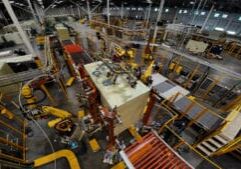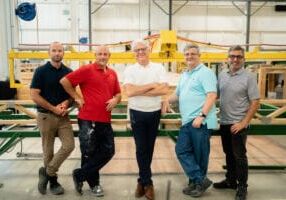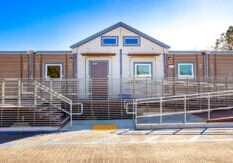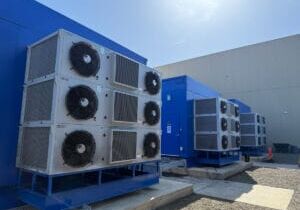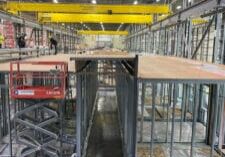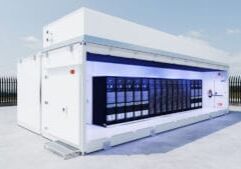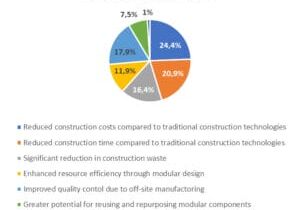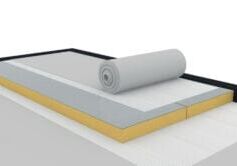Make Allies and Win Together

Landon Boucher is the director of business design and innovations at MiTek Inc.
Off-Site Construction is a term that has become a bit of a buzzword (that’s putting it mildly). Everyone these days, seems to tout the same exasperated (albeit valid) talking points about being built in a factory-controlled environment, improved processes, sustainability, reduced on-site build cycle, labor etc.
What many fail to mention, unfortunately, is that none of this matters if we have the wrong people managing it all. It is not just about process or product. It’s about people. All three are needed to make building successful.
Too often, those of us in the off-site construction sector dismiss the incredible accomplishments of our on-site construction counterparts and the tradesmen and women that are the workforce behind this industry. It’s inaccurate to claim that not much has changed in the last 100 years in the way we build homes. The list of what has changed in the last 20 years alone is too long for this post. What has always amazed me about construction is the people. The people who build our homes, our communities, our world. It is the people who have developed improved processes and products and it is the people who must be relied upon to utilize them efficiently. Like all things with people, sometimes we do it well and sometimes we don’t. This reality exists just as much in off-site construction. I have seen many projects delayed, factories failed, and processes not followed. Every single time, I can point to the people as the key factor in derailing otherwise well thought out plans.
I do believe off-site construction can be the better solution. All things being equal (i.e., good process, product, and people), I believe off-site teams will outperform on-site teams every time. But we need to be honest with ourselves and our industry by acknowledging that many times things are not equal. I think we do a disservice to the advancement of off-site construction when we fail to recognize (and furthermore, proclaim) this truth.
In lieu of making claims about how “traditional construction” is outdated, slow, and prone to problems, how about we work together, create allies, and foster a relationship of collaboration? I see a lot of posts on social media and in industry presentations that contain side-by-side comparisons of off-site and on-site construction. One photo is a messy and disorganized project and the other is a clean, well-managed depiction of just-in-time delivery methods utilizing mods or panels. I don’t ever see anyone share the failures of their own respective side of this equation. As a consultant for many years to contractors, engineers, and manufacturers, I’ve seen the failures and successes of both. I’ve seen them up close. Some I’ve even been responsible for, at least on some level.
It is my hope that we will see further progress in continuous improvement of construction by letting down our guards and engaging in collaborative efforts where we can share best practices and lessons learned based on our own direct experiences. A rising tide will raise all ships.
Let’s be authentic in our communications and win together.
More from Modular Advantage
Resia: Breaking All the Rules
Resia Manufacturing, a division of U.S.-based Resia, is now offering prefabricated bathroom and kitchen components to industry partners. Its hybrid fabrication facility produces more precise bathroom and kitchen components (modules) faster and at lower cost than traditional construction. Here’s how Resia Manufacturing does it.
How LINQ Modular Innovates to Bring Modular To The Market in the UAE and Beyond
LINQ Modular, with an office and three manufacturing facilities in Dubai, is a modular firm based in United Arab Emirates. The company is on a mission: to break open the housing and construction markets in the Gulf Cooperation Council (GCC) area with modular.
ModMax: Redefining Modular Construction with Confidence and Precision
ModMax was born out of frustration—frustration with five persistent pain points in modular construction: Permitting bottlenecks. Production delays. Rigid designs. Disconnect between “the office” and the field. Lack of transparency and communication.
LifeArk: Disaster-Resilient Housing from Recycled Plastic and 100-year-old Technology
Wee compares LifeArk’s housing units to Yeti coolers, as they are built similarly. Each component takes 15 to 20 minutes to manufacture, has an R-value of 40, and includes molded slots and chases for wiring, plumbing, fire sprinklers, and other utilities.
Building the Future of Modular Edge Infrastructure
The edge data center market is expanding rapidly, driven by the surge in AI workloads, IoT adoption, and the need for localized compute power. In these environments, sustainability, scalability, and reliability are non-negotiable. Cooling is among the most complex challenges for operators—and one of the most decisive factors in long-term success.
Accelerating Light-Gauge Steel Construction: A Semi-Automated Digital Workflow for Off-Site Projects
For construction professionals, the message is clear. By adopting semi-automation and digitalization, companies can deliver projects faster, more accurately, and more profitably, while also building stronger collaboration across teams. The approach is not about replacing people with machines, but about empowering people with better tools and processes.
Why Modular Data Centers Are Gaining Momentum
Artificial intelligence, high-performance computing, and edge applications push the limits of traditional “stick-built” data centers. They take years build, often struggle with high density workloads, and aren’t optimized for deployments near end users. Modular data center platforms are purpose-built to address these challenges, offering flexibility and scalability to adapt to evolving technologies, while opening new opportunities for the modular construction industry.
Supply Chain Innovation in Action: 5 Habits Every Modular Leader Should Practice
By applying these principles to supply chain practices — collaborative planning, strategic procurement, scenario modeling, digital tools, and transparent forecasting — construction leaders can build value chains that are not just efficient and agile, but truly innovative.
Exploring the Role of Modular Integrated Construction (MiC) in Advancing Circular City Principles – A Survey of Stakeholder Perspectives
The survey findings highlight the significant potential of Modular integrated Construction (MiC) in advancing the development of circular cities. By reducing costs, accelerating construction timelines, and minimizing waste generation, MiC offers a promising approach to sustainable urban development.
The Use of MS POLYMER™-Based Sealants and Adhesives in Modular Building
These products combine flexibility and elastic recovery with excellent adhesion to different substrates and have already shown their usefulness in traditional construction. Now it’s time for them to be put to use in the modular construction industry.

